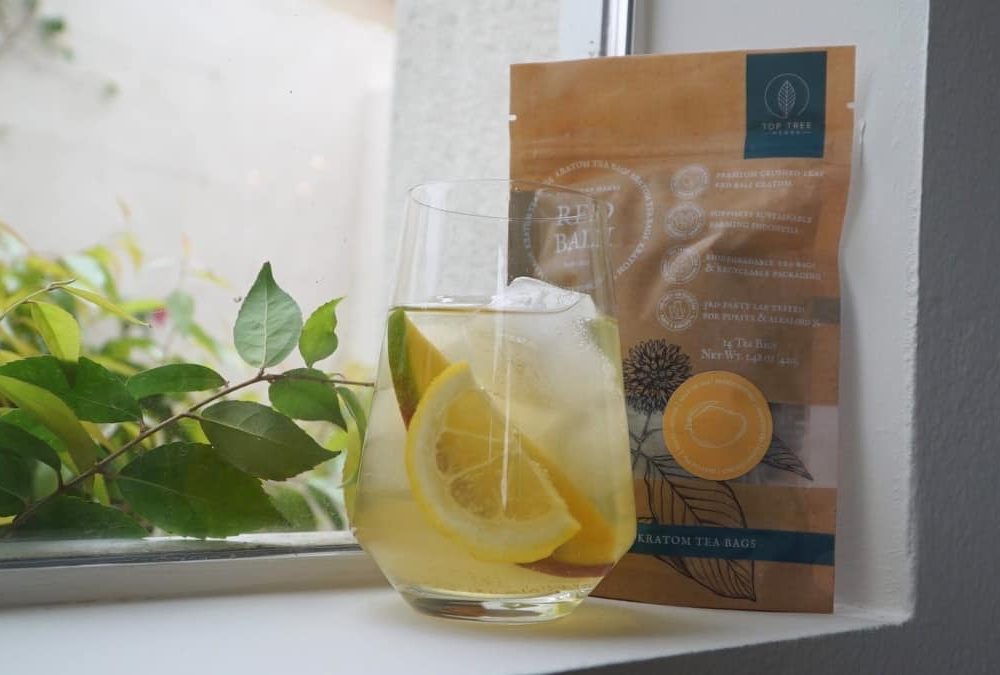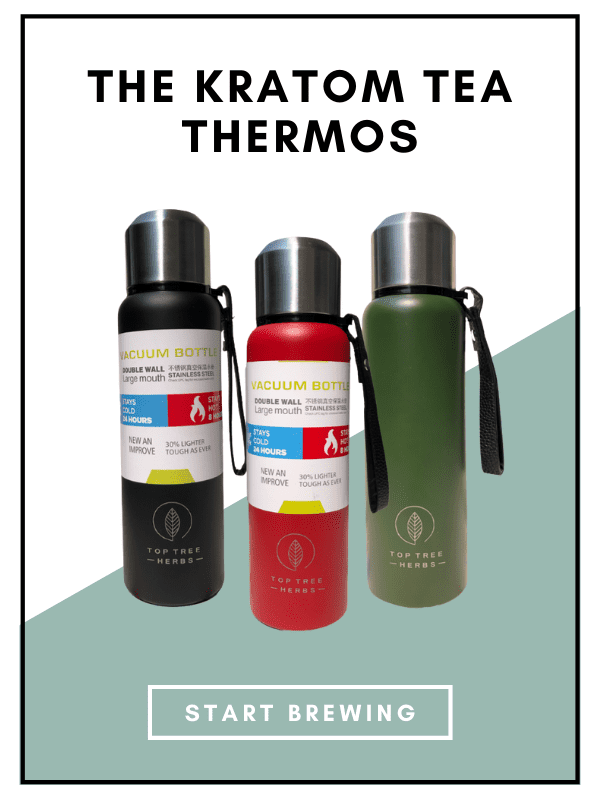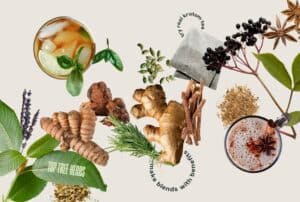Mitragyna speciosa. The plant better known as kratom has seen a rise in popularity in recent years, yet very little reliable information exists online on the subject of kratom tea.
You will see and hear many of the common myths surrounding kratom repeated on various platforms. Vendors may claim to have a special kratom strain, while consumers may claim conflicting experiences and effects from kratom.
In part due to the widespread commercialization of the plant, unverified “facts” are being spread as truth in the kratom community. With so many narratives developing around the subject of kratom, it’s hard to know what to believe. In this post, we clear up some of the confusion regarding this unique and wonderful plant.
A Brief History of Kratom Use
Indigenous to Southeastern Asia, kratom was originally used by local laborers and farmers. They drank kratom tea as a source of energy in order to combat the exhaustion that accompanies a hard day’s work.
Laborers would often chew on raw kratom leaf, or brew a traditional herbal kratom tea if time permitted.
In addition, locals in Southeastern Asia have enjoyed traditional kratom tea in social settings for centuries. Despite persecution in places like Thailand, kratom remains as popular as ever with locals in the region.
Much like a traditional cup of morning joe, consumers often report heightened spirits and a sense of focus. Despite this fact, kratom actually contains no caffeine whatsoever.
Additionally, when consumed in larger servings, kratom can actually have the opposite effect. Much like chamomile, kratom has a storied use in Southeastern Asia as a relaxing nighttime brew.
From its traditional labor roots, kratom has made quite the transition in recent years. Particularly in the health and wellness community, kratom has risen in popularity in the form of a pre-workout capsule that offers an energizing boost to consumers looking for natural alternatives.
Nowadays, kratom has become so widely available that you can get in nearly any form. The most common forms of kratom sold on the market today are powders, capsules, and extracts. However, as we’ll detail later, neither of these forms are true to the traditional kratom practice.
With such a storied history of traditional use in Asia, worldwide kratom use (particularly in the US and Europe) is in its relative infancy.
Different Strains of Kratom
Many of the common myths and misconceptions that we previously mentioned show up in the “kratom strain” category.
If you type “kratom tea” into google, your results will come up with hundreds of different blends and “strains.” Most strain discussions take place by vendors and marketers, not scientists. These unique strains are often simply a marketing ploy by vendors in order to drum up business.
In this section, we’ll address this concept of various kratom strains that you’re likely to encounter online.
The Myth of Kratom Tea Strain
Most online vendors follow a common classification method when it comes to kratom strain. Here’s what you’re likely to observe on the majority of these sites:
Green Vein Kratom
Considered a great strain for beginner kratom consumers, green vein is calming strain that can help ease general anxiousness. Somewhere between a white and red vein kratom, the effects of green vein offer a pleasant but mild experience for consumers.
Red Vein Kratom
Red vein kratom comes from mature kratom leaves. It is a great option for consumers looking to wind down at the end of the day. Great for those individuals looking for a relaxing strain that can help ease the aches and pains of a long day.
White Vein Kratom
White vein kratom is the strain for those looking for an energetic boost to start your day. Harvested from juvenile kratom leaves, white vein kratom is your go-to coffee replacement strain, without the unwanted jitters.
Yellow Vein Kratom
We’ll abandon the “vendor-speak” and just be candid with you on this one. If you see a vendor offering a yellow vein strain, they are sadly misinformed or intentionally misleading you. Yellow vein strains of kratom are actually just a blend of existing products being marketed as a novel strain.
This presentation of the special “strains” of kratom and their effects is extremely common with online vendors. They use this method in order to taut unique “strains” that only their supplier can provide.
Time to put the myths to rest.
The Truth About Kratom Strains
In reality, kratom comes from the Mitragyna speciosa plant. This means there are no such thing as different “strains” of kratom, especially not in the way that vendors present the different veins of kratom as something entirely unique.
To help you conceptualize kratom correctly, think of it like tea, which all comes from the same species of plant.
Like tea, kratom “strains” are also often subjected to various methods of visual alteration. This can include various drying and processing methods, as well as light exposure and fermentation techniques that alter the color of the leaf.
Despite how some vendors make it seem, the vast majority of the kratom in the United States can actually be traced back to Indonesia!
In fact, the majority of the strains you’ll find online started as “red vein” kratom, and have been altered by various methods to fool the consumer.
But what about the varying effects of different strains that are reported by consumers? Well as it turns out, this question has a relatively simple answer: alkaloids. Kratom contains over 40 unique alkaloids, all at varying levels depending on the product.
Rather than a unique “strain” of kratom, the alkaloid profile of the respective kratom leaf produces these various effects. Both the quantity and type of the alkaloids present will ultimately determine the effects of the “strain”.
What is Kratom Tea?
Raw leaf, capsules, tea, toss-and-wash. With so many options available, why do we at Top Tree insist that tea is the optimal way to enjoy kratom? Why should you go through the extra steps of brewing a tea?
Both valid questions. Well, for starters, many consumers simply have trouble consuming and digesting the raw leaf. In one of the largest kratom surveys ever conducted, nearly a quarter of all respondents reported constipation or nausea.
By taking the raw leaf out of the equation, we believe that these numbers can be reduced. Now, we have to confess, we are not licensed medical professionals. We believe that some of these complications may be avoided by not having to digest plant matter.
As with any beverage, there will always be some complications that arise in individuals after consumption. If you’re experiencing any uncomfortable reactions to kratom consumption, we recommend consulting a licensed physician.
In addition to complications from ingesting raw kratom, another added benefit from kratom tea is the taste factor. Simply put, many consumers find the taste of raw kratom leaf or powder to be harsh and bitter.
By making a traditional kratom tea, you allow yourself the option to infuse your brew with a limitless amount of pleasant tasting ingredients. For example, we offer all-natural kratom tea bags infused with passion fruit, valerian root, and ginseng.
How to Brew Kratom Tea
Are you interested in making a traditional kratom tea? You’ve selected a strain that best matches your needs, and now it’s time to begin brewing.
We’ve got you covered!
There is much debate around the subject of how to brew a “proper” kratom tea.
While there is no consensus on what constitutes the best brewing practice for kratom, we do have a relatively simple tried and true method for brewing an effective traditional kratom tea.
To make a traditional kratom tea, you’ll only need 4 simple items:
- Your preferred kratom tea bag(s)
- A thermos
- Hot water
- Lemon juice (or lime if you prefer) – Lemon juice is an acid that helps in the extraction of active alkaloids found in the leaf.
To begin, you’ll want to start by mixing your tea bags and lemon juice at the bottom of your thermos. After that, you’ll want to boil some water and add it to your thermos. Finish by replacing the cap and letting the brew steep for 20 minutes.
Congratulations, you have made your first traditional kratom tea!
(Check out our updated 2022 kratom brewing guide for complete instructions here)
In Conclusion
We hope that this article has helped clear up some of the questions you may have had about kratom. Whether you’re new to the kratom community, or a kratom connoisseur, it never hurts to be informed.
Regardless of how you enjoy your kratom, it’s important to understand what you’re consuming. While we strongly recommend our traditional kratom tea bags: If you decide to buy elsewhere, always make sure that your vendor is AKA certified with a GMP compliant facility.
If you have any further questions, comments, or concerns, feel free to comment or reach out to us! We here at Top Tree Herbs are committed to providing quality kratom tea, as well as providing reliable information regarding the tea we are so passionate about.
Cheers to better brewing!






